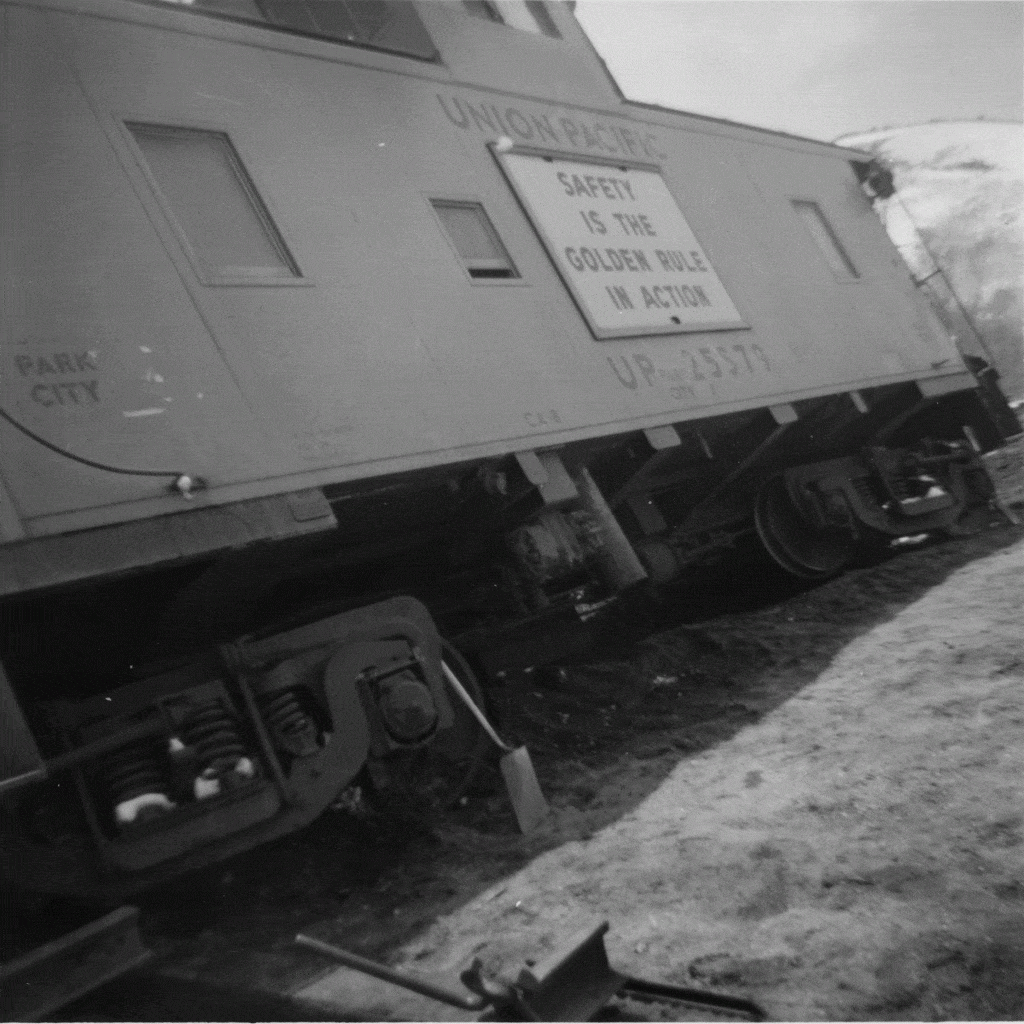Welcome back to the “smashing” conclusion of our series on Park City’s only runaway train. The action took place on a cold, winter-like Friday, April 26, 1968.
Last week’s story concluded with Fay Dearden, Park City’s Union Pacific station agent, driving along Park Avenue trying to keep abreast of the runaway train. One of Fay’s many worries was the unprotected grade crossings directly on the train’s path. A moving train can be remarkably quiet, and the lives of anyone who happened to be near those crossings were in danger.
The Park City dump was on the north end of town adjacent to a sharp turn in the tracks. Fred Fuelling, supervisor of the dump, was enjoying the warmth of his shanty protected from the pernicious weather. The afternoon’s solitude was shattered by a sound he had never heard before: a combination of high pitched metal on metal squealing, snapping and cracking followed by a sound like two automobiles colliding at high speed but with a heavier, thunder-like tone.
He stepped out of his building to investigate what could possibly have made such a sound. He was shocked. Before him, the Park City Local lay broken on the ground. The momentary roar of the wreck was replaced by the hissing sounds of air escaping from ruptured subsystems and burbling as the diesel motors continued to idle. The rails had been torn loose and scattered. While Fuelling stood there looking, the crew arrived to shut down the engines and assess the damage.
From his vantage point Fay had witnessed the careening end to the day’s nightmare. The runaway ordeal consumed less than ten minutes, but for Fay and the crewmen it had seemed like an eternity. As Fay’s blood pressure normalized he offered a silent prayer: no one was injured (a miracle); the train had derailed in an undeveloped area (no collateral damage); and the possibility of worse mayhem further down the line was over. As if on cue the sun began to emerge.
People gathered around the wreck in awe of scene before them. It was the last time that they would see the Park City Local off the rails and on the ground. Fay’s fifteen-year-old daughter Marian joined him at the crash site equipped with her automatic camera. She would record spectacular photos of the accident. The worst was over, but still to come was the arduous clean-up. There was no question an inquiry would ensue.

Credit: Park City Historical Society and Museum, Marian Dearden McGuire Collection
The Park City branch was closed for three days while the Union Pacific picked up the pieces and repaired the track. Ultimately the crew was absolved of any negligence; the brake system had experienced a mechanical failure. Eventually the Federal Railroad Administration would change operating procedures requiring an engineer to remain in the cab at all times when a train was on an incline and/or until it was securely tied down.
As rail operations returned to normal everyone agreed that all things considered Park City’s runaway train nightmare could have been worse.